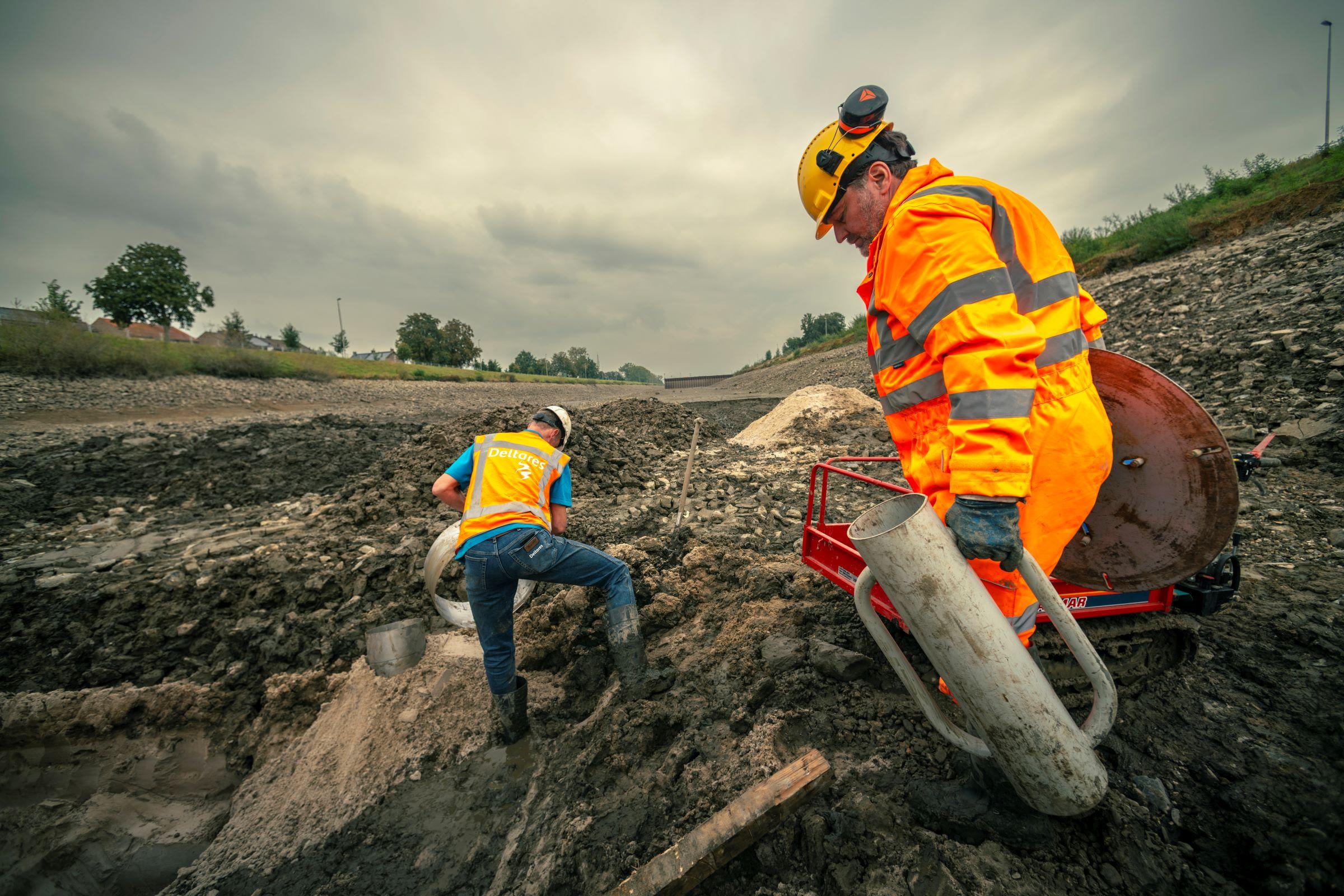Smart canal modifications without disruption
The Netherlands regularly deepens and widens canals to keep them navigable. To do this work well, we need to know more about the interaction between the canals and the subsurface. In the coming period, Deltares will be studying the subsurface of both the Juliana Canal and the Amsterdam-Rhine Canal for Rijkswaterstaat.

More and more modifications such as deepening and widening are required to keep the Dutch canals navigable. The modifications sometimes cause problems with water in the surrounding areas, such as water leaking into homes or upward water seepage in ditches, fields and meadows. They can also disrupt shipping, forcing ships to take detours or slow down during certain periods on a particular section.
To prevent further nuisance and to work efficiently on the canals, Deltares will be studying the subsurface of the Amsterdam-Rhine and Juliana Canals, among others. A good understanding of the interaction between the canal and the subsurface is essential to minimise economic and societal damage.
Importance of waterways
With more than 1,250 canals, the Netherlands is truly a country of canals. Most of them were dug between 1800 and 1850 for freight transport. Since then, the vessels have got larger and broader, requiring the deepening or modification of many canals. Because the Netherlands is looking to reduce road haulage traffic for environmental reasons, waterways are an important route for goods transport. Any blockages involve a risk of major economic damage. At the same time, the areas around canals where work is being done are sometimes affected by water nuisance.
Subsurface research
To prevent or minimise that nuisance, Deltares is conducting research on behalf of Rijkswaterstaat into the functioning of the canal-subsurface system. This system is complex, it is different for each canal, and it is shaped by factors including the type of canal bed, water levels in and outside the canal, and the structure of the subsurface.
To understand and analyse the canal-subsurface system, Deltares is making subsurface models based on measurements of, for example, groundwater levels and the canal bed. Rijkswaterstaat can use these models for future modifications, for instance when designing the widening or deepening of canals, and therefore minimise the impact on the surrounding areas. These models can be used to identify the source of any problems with water: effective measures are impossible without that knowledge.

Many more canals in the Netherlands will undergoing modifications in the future. Rijkswaterstaat is therefore facing the challenge of implementing those modifications as quickly as possible and without disturbing the surrounding area. A sound understanding of the soil and subsurface is essential here.
Study of the Juliana Canal
In early October, a Deltares team studied the drained section of the Juliana Canal in the province of Limburg. Deltares had already conducted geophysical measurements from a ship to map out the soil and the subsurface. This canal rests on gravel, from which water drains easily. As a result, during its construction in the 1930s, a layer of clay was laid down on the bed with a protective layer of gravel on top. Soil samples and water permeability tests can be used to investigate the current structure and functioning of the soil.
Questions that Deltares and Rijkswaterstaat want to answer include: Is the clay layer still in place everywhere? How will the canal affect the groundwater system in the vicinity? Can leaks in the canal bed be measured from a ship? The study of the drained canal bed helps to validate the geophysical measurements of the subsurface structure that are made when there is water in the canal. This is useful for the application of measurement techniques in other canals.
We compare the information we retrieved during our fieldwork on the drained bed with the data collected previously. This allows us to see whether our subsurface models are accurate. With this unique dataset, we can improve measurement techniques for canal beds.
Marc Hijma, subsurface expert

Study of the Amsterdam-Rhine Canal
Deltares is also initiating a study of the Amsterdam-Rhine Canal near Nigtevecht that will look at measures to reduce problems caused by water. In the years ahead, Deltares will install a number of monitoring wells to collect information about hydraulic heads and flow directions. This will serve as the basis for a subsurface model. Deltares is also looking at shipping, the associated loads on the canal beds and the expected level of scour. We will therefore be monitoring scour channels and looking at the composition of the canal bed. There are quays on the banks of the Amsterdam-Rhine Canal with a sheet piling structure. These also affect the subsurface, as well as the groundwater and the stability of the quays.
Impact
Deltares will be working with experts from Rijkswaterstaat to determine what we need to know to design potential measures and consider their respective merits. The resulting subsurface model can be used to assess the effectiveness of measures, here and in other canals in the Netherlands where there are leaks.
The knowledge developed by Deltares can help to reduce the risks and failure costs of planned work on the canals. This fits in with the Deltares ambition to contribute to resilient infrastructure: a Netherlands that stays connected to Europe and the world.




